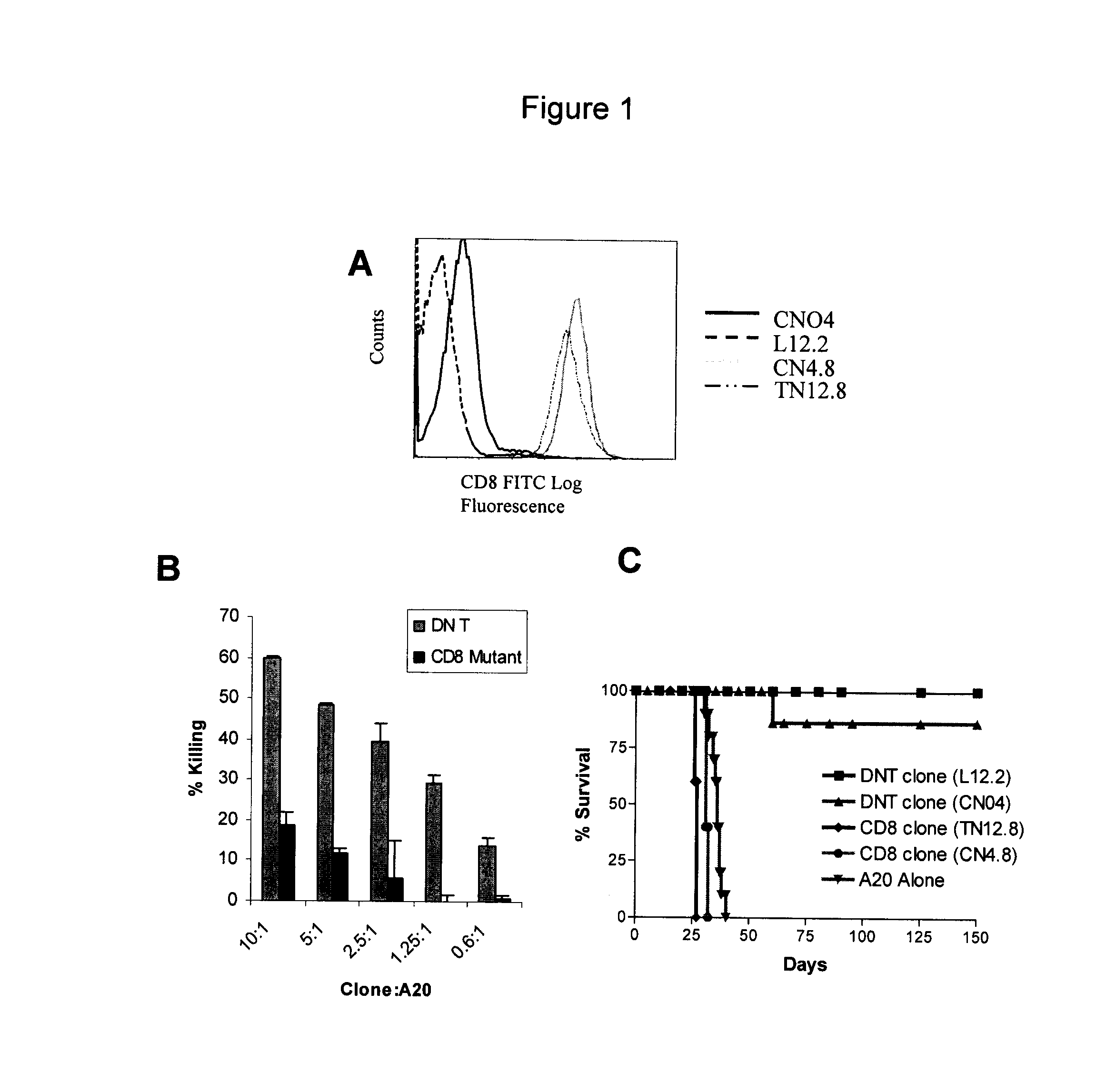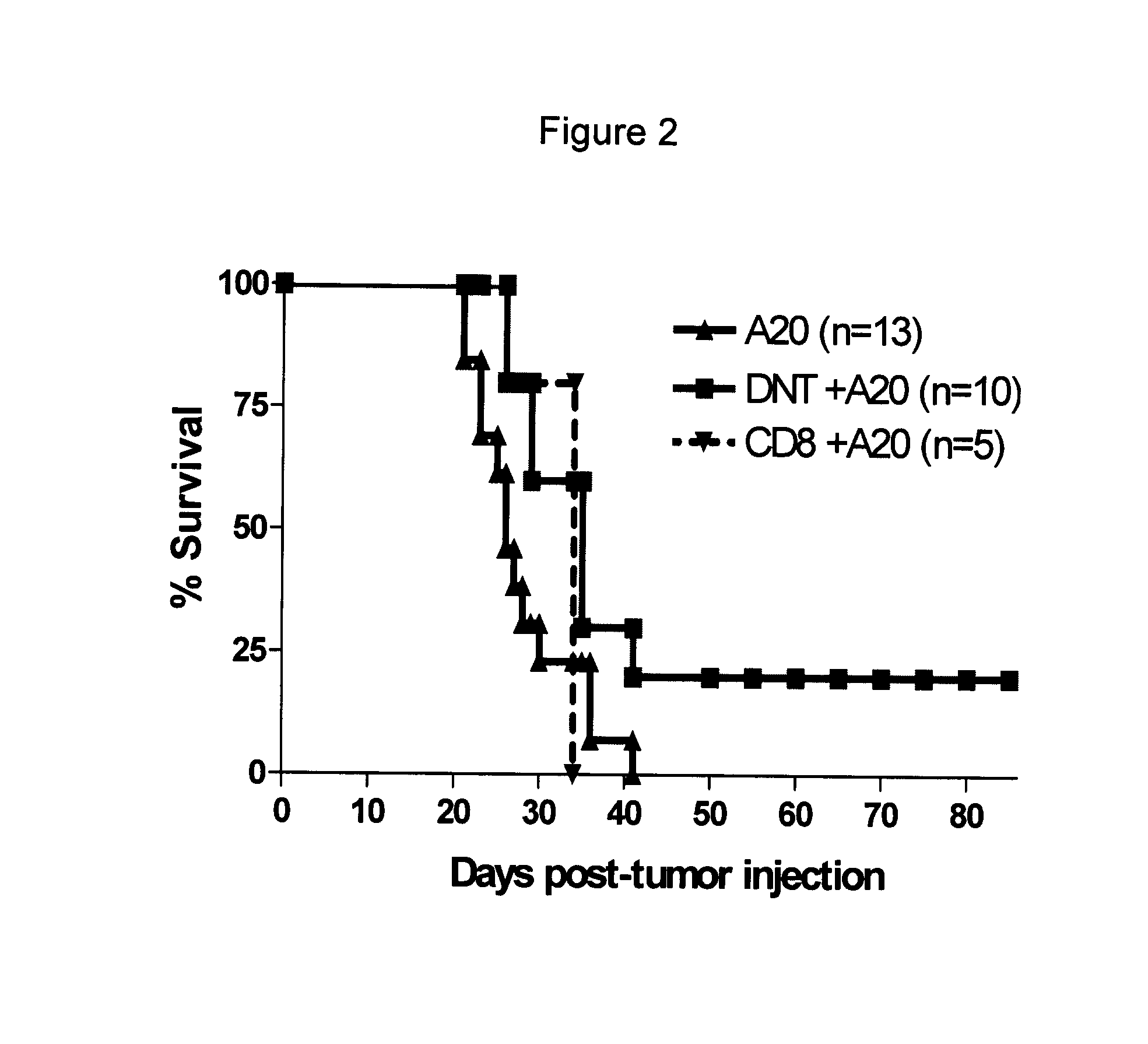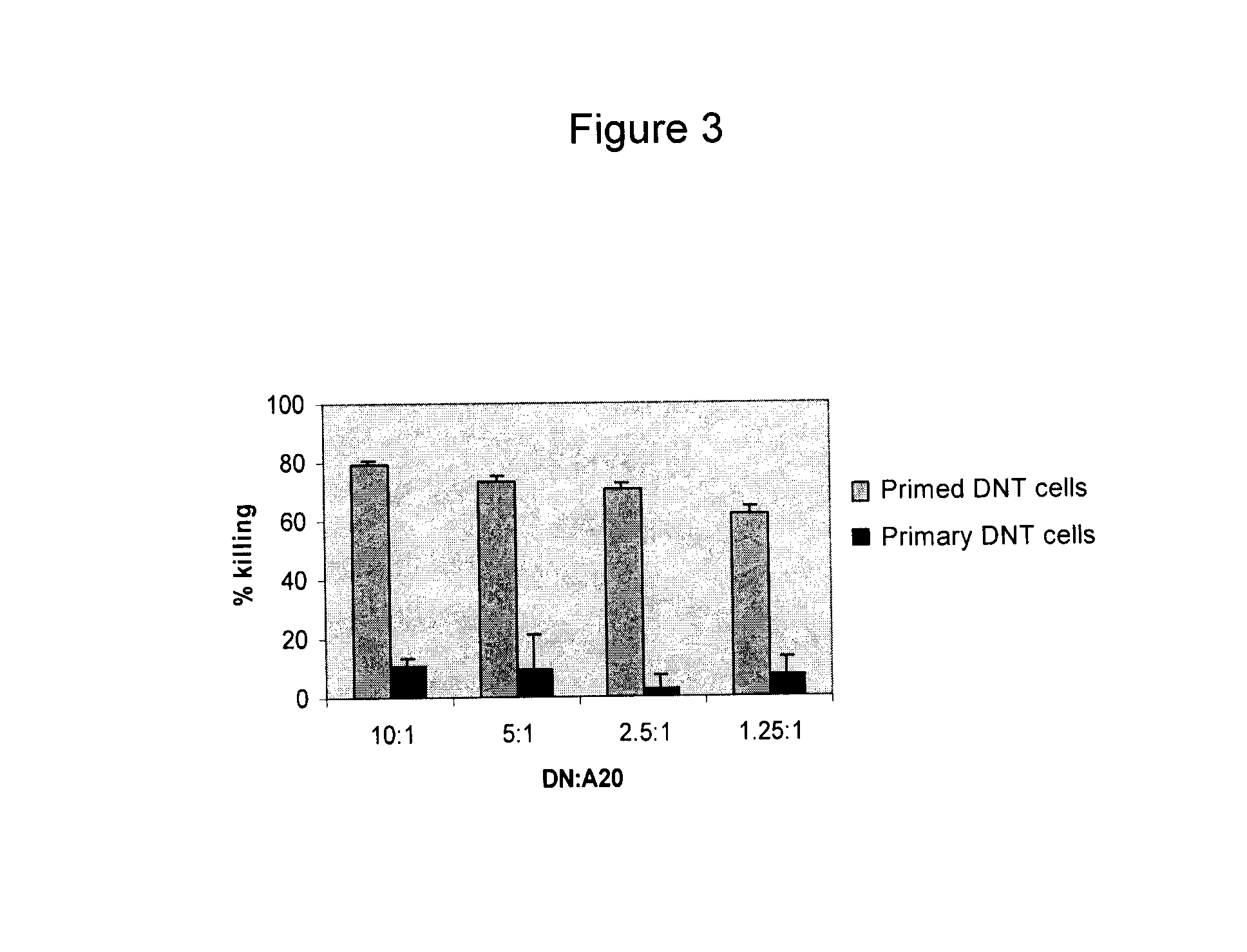Method of expanding double negative T cells
a double negative t cell and ex vivo technology, applied in the field of ex vivo expansion of double negative t cells, can solve the problems of severe limited treatment, severe autoimmune disease in treated patients, cancer relapse, etc., and achieve the effect of reducing tumor growth and reducing tumor growth
- Summary
- Abstract
- Description
- Claims
- Application Information
AI Technical Summary
Benefits of technology
Problems solved by technology
Method used
Image
Examples
example 1
Murine DN Cells
[0064]The inventors have generated a panel of mouse DN T cell clones. During long-term cultivation, several natural mutant T cell clones arose which express CD8 (FIG. 1A). In FIG. 1A, Ld− DN T cell clones CN04 and L12.2 and their natural mutants CN4.8 and TN12.8 were stained with CD8-FITC, and analyzed by flow cytotometry. Both mutant clones are CD8+. The mutant clones have reduced cytotoxicity to A20 tumor in vitro (FIG. 1B). In FIG. 1B, DN T cell clone CN04 and its CD8 mutant clone CN48 were used as effector cells at ratios as indicated. Ld+ A20 tumour cells were used as targets. Specific lysis of the target cells was measured in a cytotoxic assay. While a single infusion of DN T cell clones can prevent recipient tumor development from a lethal injection of lymphoma cells, adoptive transfer of the same number of CD8+ mutant clones have no protective effect (FIG. 1C). In FIG. 1C, (B6×BALB / c)F1 mice (Ld+) were infused with 105 / mouse A20 tumor cells either alone or tog...
example 2
Human DN Cells
[0071]The population of DN T cells in human peripheral blood is very low (FIG. 4A). To determine whether human DN T cells can be used as a novel cancer adoptive immunotherapy, the inventors developed a protocol by which human DN T cells can be expanded ex vivo. Peripheral blood samples were collected from healthy individuals and the red blood cells were lysed. The remaining PBMC were stained with CD3-Cy-Chrone, CD4-FITC and CD8-FITC. Percentage of CD3+CD4−CD8− T cells in PBMC is shown in G4 region of FIG. 4A. Erythrocytes and CD4, CD8 T cells were depleted using the Human CD4 / CD8 depletion cocktail kit (Stem Cell Technologies). The residual DN T cell enriched population was then cultured in anti-CD3 mAb pre-coated 24-well plates for 3 days in the presence of recombinant human interleukin-2 (rhIL-2, 50 U / mL) and rhIL-4 (30 U / mL). Activated T cells were washed and cultured for another 4 days in the presence rhIL-2 and rhIL-4. On day 7, viable cells were split and culture...
PUM
| Property | Measurement | Unit |
|---|---|---|
| time | aaaaa | aaaaa |
| time | aaaaa | aaaaa |
| volume | aaaaa | aaaaa |
Abstract
Description
Claims
Application Information
 Login to View More
Login to View More - R&D
- Intellectual Property
- Life Sciences
- Materials
- Tech Scout
- Unparalleled Data Quality
- Higher Quality Content
- 60% Fewer Hallucinations
Browse by: Latest US Patents, China's latest patents, Technical Efficacy Thesaurus, Application Domain, Technology Topic, Popular Technical Reports.
© 2025 PatSnap. All rights reserved.Legal|Privacy policy|Modern Slavery Act Transparency Statement|Sitemap|About US| Contact US: help@patsnap.com



